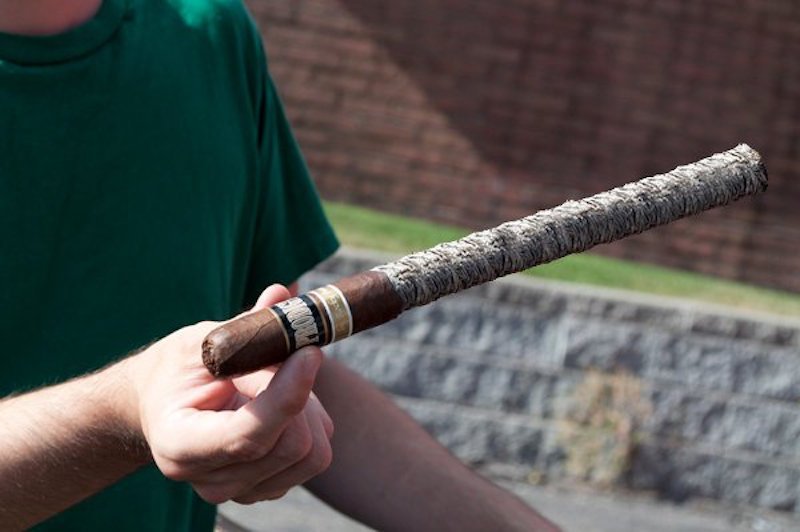
Have cigar smokers ever looked closely at the ash after enjoying a cigar?
Share
Have cigar smokers ever looked closely at the ash after enjoying a cigar?
In fact, cigar ash is not just a product of burning tobacco leaves. Today we will briefly introduce you to three aspects of ash and learn what signals it can send. Smoke ash length Professional cigar smokers can tell the quality of a cigar by the length of the ash.
Generally speaking, cigar ash stays about an inch long and does not spread easily after it falls out. This is because the cigar leaves are tightly packed with just the right amount of space between them, resulting in a relatively dense ash that is less likely to fall out. For example, long-filler cigars are denser than short-filler cigars. When a long-filler cigar burns, the ash is more solid, so it maintains a longer ash length compared to a long-filler cigar.

Similarly, handmade cigars are denser than machine-made cigars and will have a longer ash length after a puff. In addition, the ash length also affects the taste of the cigar. When you smoke a cigar, the air will first pass through the ash as cooling, making the cigar burn cooler and thus the cigar taste smoother, while a longer ash will speed up the cooling of the snow and make the taste of the cigar milder and smoother when you smoke it.

On the contrary, if the cigar ash is relatively loose, easy to fall off, and falls apart when you blow on it, it means that the cigar is of poor quality. Ash shape Generally speaking, a cone-shaped ash means that the cigar is well constructed and rolled, while a cavernous ash means that the wrapper and wrapper are not fully burned and will often be pungent when smoked.
Why?
It is related to the structure of the cigar. The body of a cigar is made up of three parts: the filler, the binder, and the wrapper. The filler is made from a type of tobacco called " ligero ", which is taken from the very top of the tobacco plant and is the main source of flavor for the cigar. As a result, the cigar's filler leaf burns longer than the outer wrapper and binder leaves, and when the ashes from the outer leaves fall off, the center leaf is still burning, creating a conical ash. If your cigar ash is cavernous when you smoke it, your personal tasting habits are lacking. Smoking too slow and taking too long to put the cigar down will cause the outside of the cigar to drop in temperature while the center remains hot, so the warmer core will burn faster than the wrapper and wrapper, creating a cave shape. Ash Ring When looking closely at the ash, cigar smokers can easily see that there is also a ring around the ash, which is actually the ash ring of the cigar.

If a cigar burns perfectly, this ring of ash will be more balanced. This is due to the fact that each section of the cigar contains a variety of different tobaccos, including the wrapper, binder, and filler, which leave different ash after burning.
The presence of ash rings indicates that the cigar is layered, which corresponds to the richness of the cigar's flavor, or more intuitively, that the flavor is layered. In addition, the formation of ash rings also reflects the level of humidity in the cigar.
Cigars that are too dry will have large intervals between rings of ash, those with high humidity will have small intervals, while extremely dry cigars will probably not have rings of ash, but will only have flakes of ash on the surface.

